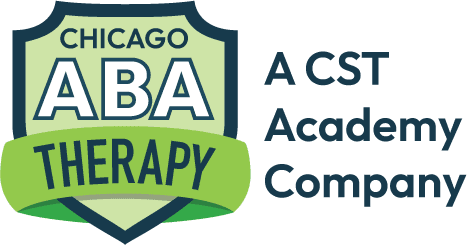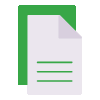Aphasia is a complex language disorder that results from damage to portions of the brain responsible for language. It can impact a person’s ability to speak, understand spoken language, read, and write. Although aphasia does not affect intelligence, it can significantly hinder communication, making everyday interactions challenging. This condition is commonly seen in individuals who have experienced a stroke, head injury, brain tumor, or other neurological conditions.
Understanding Aphasia
Aphasia is typically classified into different types based on the specific language abilities affected and the area of the brain involved. The main types of aphasia include:
- Broca’s Aphasia (Non-fluent Aphasia):
- Characteristics: Individuals with Broca’s aphasia often have difficulty producing speech. Their speech is typically slow and requires great effort, and they may leave out small words such as “is,” “and,” and “the.” However, their comprehension can be relatively preserved.
- Brain Area Affected: Broca’s area, located in the frontal lobe of the brain.
- Wernicke’s Aphasia (Fluent Aphasia):
- Characteristics: Those with Wernicke’s aphasia can produce fluent speech, but it often lacks meaning. They may use incorrect words or create new words, making their speech difficult to understand. Comprehension is usually impaired.
- Brain Area Affected: Wernicke’s area, located in the temporal lobe of the brain.
- Global Aphasia:
- Characteristics: Global aphasia is the most severe form and results in profound deficits in all aspects of language. Individuals with global aphasia have significant difficulties with speaking, understanding, reading, and writing.
- Brain Area Affected: Extensive damage to the brain’s language areas, often encompassing both Broca’s and Wernicke’s areas.
- Anomic Aphasia:
- Characteristics: People with anomic aphasia have trouble finding the correct words, particularly nouns and verbs. Despite this difficulty, their speech is usually fluent and grammatically correct.
- Brain Area Affected: Various areas, as anomic aphasia can result from damage to different parts of the brain.
Causes and Risk Factors
Aphasia typically results from brain injury or damage. The most common cause is a stroke, which can lead to a disruption in the blood supply to areas of the brain responsible for language. Other potential causes include:
- Head Trauma: Physical injury to the brain from accidents or falls.
- Brain Tumors: Growths that affect brain function and damage language centers.
- Infections: Infections such as encephalitis that cause brain inflammation.
- Degenerative Diseases: Conditions like Alzheimer’s disease that progressively damage brain tissue.
Risk factors for developing aphasia align with those for stroke and other neurological conditions, including high blood pressure, high cholesterol, diabetes, smoking, and advanced age.
Symptoms of Aphasia
The symptoms of aphasia vary depending on the type and severity of the condition but commonly include:
- Difficulty speaking or producing speech
- Problems understanding spoken language
- Difficulty finding the right words or forming sentences
- Challenges with reading and writing
- Using incorrect words or nonsensical language
- Struggling with word repetition
Diagnosis of Aphasia
Diagnosing aphasia involves a comprehensive assessment by a healthcare professional, typically a neurologist or speech-language pathologist. The diagnostic process includes:
- Medical History and Physical Examination: Reviewing the patient’s medical history and conducting a neurological exam to identify the cause of symptoms.
- Language Assessments: Administering standardized tests to evaluate various aspects of language, such as speaking, understanding, reading, and writing.
- Imaging Tests: Utilizing imaging techniques like MRI or CT scans to identify areas of brain damage.
Treatment and Management
While there is no cure for aphasia, various treatment approaches can help individuals improve their language skills and communication abilities. Treatment typically involves:
- Speech and Language Therapy:
- Individual Therapy: Personalized sessions with a speech-language pathologist focusing on specific language deficits.
- Group Therapy: Opportunities to practice communication skills in a supportive group setting.
- Computer-based Therapy: Utilizing software programs designed to improve language skills.
- Communication Strategies:
- Augmentative and Alternative Communication (AAC): Using tools such as picture boards, speech-generating devices, or apps to aid communication.
- Compensatory Techniques: Teaching strategies to compensate for language deficits, such as using gestures or drawing.
- Family Education and Support:
- Training for Family Members: Providing education and training to help family members support the individual with aphasia.
- Support Groups: Connecting with others facing similar challenges for mutual support and encouragement.
- Medical Interventions:
- Medications: In some cases, medications may be prescribed to address underlying conditions or enhance recovery.
- Surgical Options: Rarely, surgical interventions may be considered if a brain tumor or other structural issue is identified.
Living with Aphasia
Living with aphasia presents unique challenges, but with the right support and resources, individuals can lead fulfilling lives. Strategies to improve quality of life include:
- Consistent Practice: Regularly engaging in activities and exercises that stimulate language skills.
- Building a Support Network: Connecting with support groups and organizations that offer resources and community.
- Utilizing Technology: Leveraging speech and language apps, online resources, and communication devices.
- Advocating for Accessibility: Working with healthcare providers, employers, and community organizations to ensure access to necessary accommodations.
Conclusion
Aphasia is a significant language disorder that affects communication abilities, but with proper diagnosis, treatment, and support, individuals can make meaningful progress. Awareness and understanding of aphasia are crucial in creating a supportive environment that fosters communication and inclusivity. If you or a loved one are experiencing symptoms of aphasia, seeking professional help is the first step toward improving language skills and enhancing quality of life.








